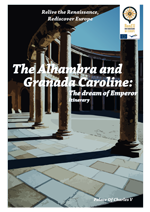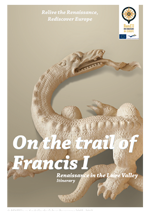Shaping the Landscape
In the final years of the 20th century, great attention was focussed on the problem of cultural landscapes, which, according to the definition expressed by UNESCO, represent the combined effects of nature and man. Cultural landscapes are crucially important for us as European citizens of the 21st century, insofar as they bear an indelible trace of the past from which we come and that has made us what we are. Europe is a highly urbanized continent, where 'natural' elements have been affected by human intervention. For us contemporaries, it is essential neither to deny nor to reject this intervention, but to be aware of how it has operated, and above all of how we can continue to intervene to project ourselves into the future without deleting the past.
The European Renaissance represents a crucial moment for the formation of the modern concept of landscape, although it developed fully only in the following centuries. In Renaissance painting, the landscapes play an interesting role, although this was to be fully acknowledged only by subsequent generations. Even Leonardo and Dürer, notes Michael Jakob, operated in the open air, in nature, creating works during excursions or voyages, but these, according to the rhetorical/aesthetic canons of the time, were considered 'minor', and were appreciated only starting in the 18th century in the light of a different experience with landscape (see M. Jakob, "Il paesaggio", Bologna 2009, p. 56). At the same time, the Renaissance epoch saw a pronounced increase in the process of urbanization, already begun in the late Middle Ages, which led to a real appropriation of space, remodelling the role of city and countryside as well, with the former, situated above, regarding the latter, occupying a lower position. Symbolic of this process of appropriation are without doubt gardens, highly appreciated in the Renaissance, where a natural area was reconstructed in a profoundly human context.
Related itineraries
![]() The Alhambra and Granada Caroline: the dream of Emperor
The Alhambra and Granada Caroline: the dream of Emperor

The territory of the Alhambra provides a truly unique example of cultural landscape. On the one hand we find a natural panorama with fascinating oriental-style features, while on the other we have a medieval city showing both Islamic and Christian characteristics. It represents a splendid example of the appropriation of space by man, and of its perspective structuring on different levels, with the palace and the fortress, which still show oriental features, dominating the city.

The formation of the modern concept of landscape finds a major reference point in the architecture of the Loire Valley at the time of King Francis I. The garden becomes in fact a predominant element - much more so than in the past - of the chateau. Unlike the Italian model, in the gardens of the Loire Valley there is a hierarchical element, with the chateau dominating the landscape from above, and the gardens occupying a subordinate position.